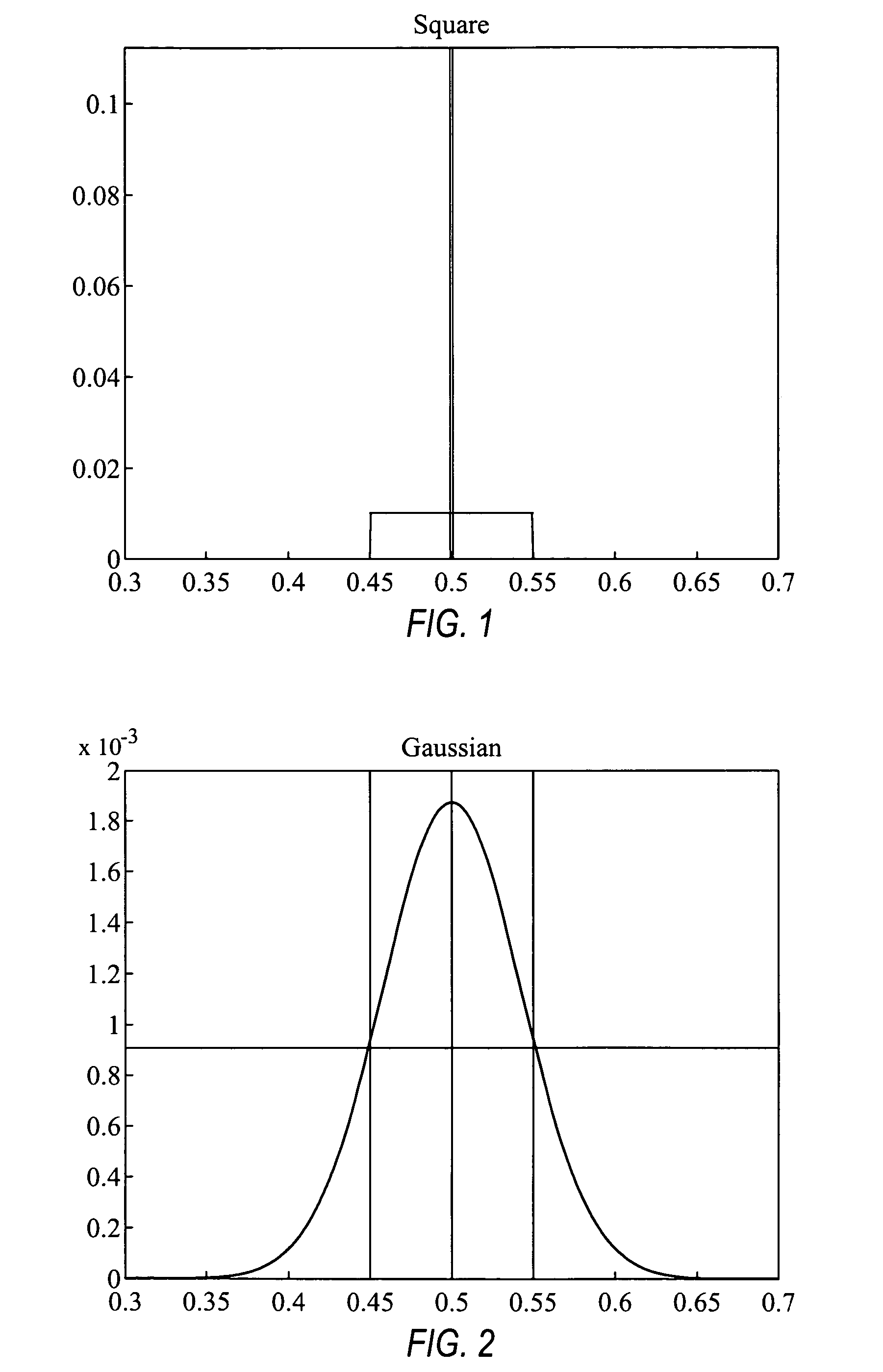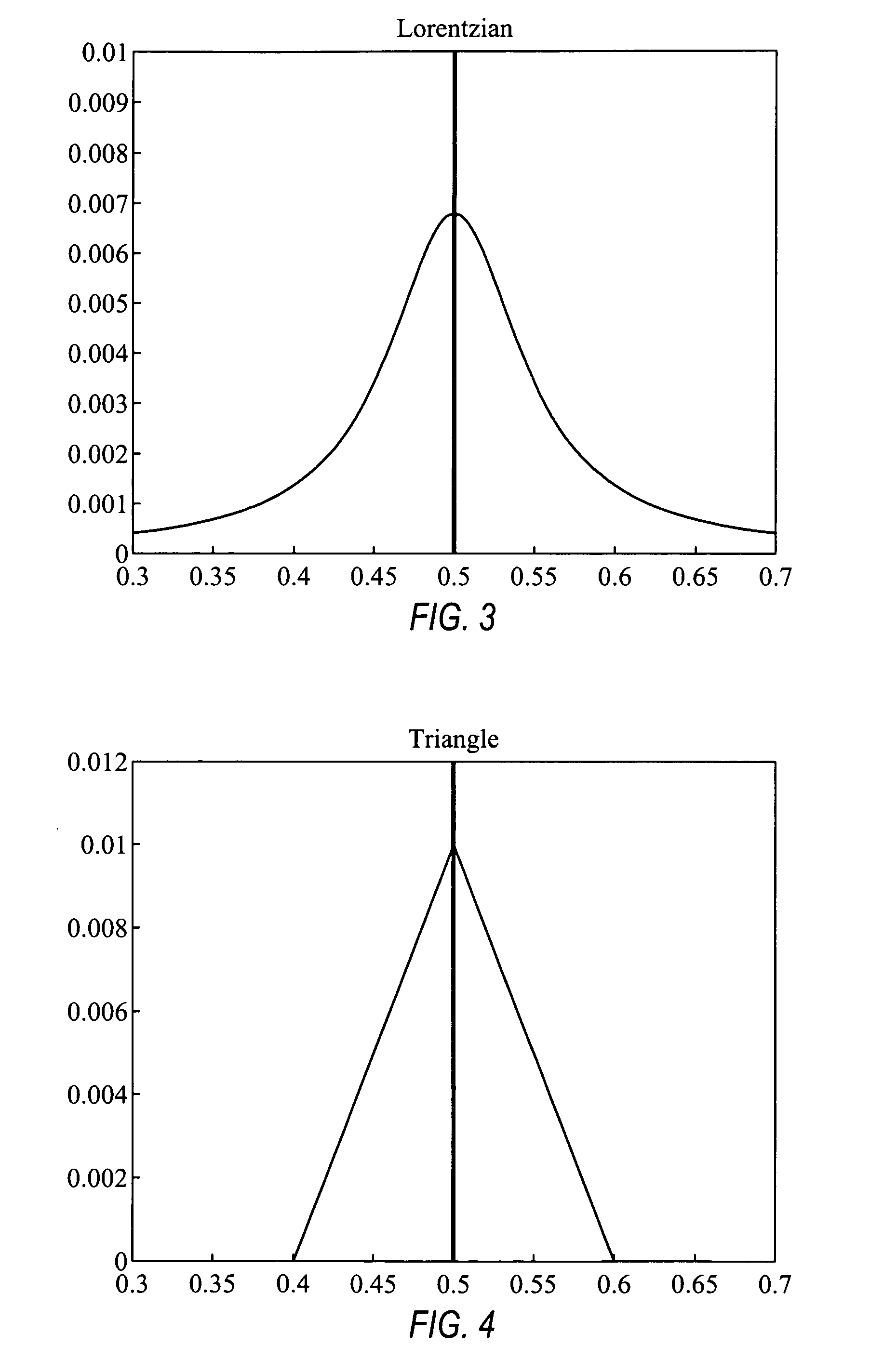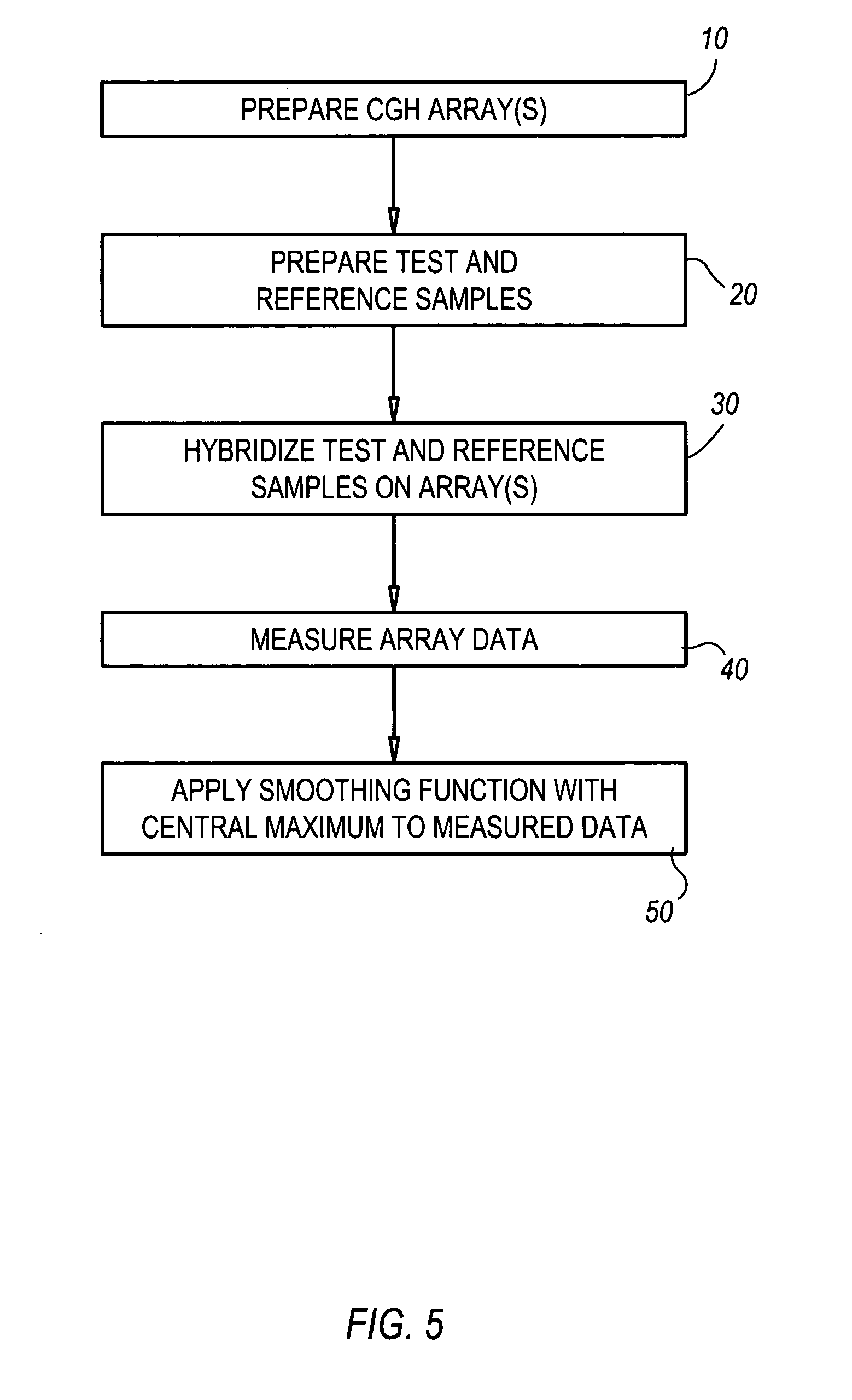Comparative genomic hybridization significance analysis using data smoothing with shaped response functions
a technology of genomic hybridization and data smoothing, applied in material analysis, instruments, measurement devices, etc., can solve problems such as difficult to precisely determine change points, dna copy sequence number alterations, and poor signal-to-noise ratio for individual probes
- Summary
- Abstract
- Description
- Claims
- Application Information
AI Technical Summary
Benefits of technology
Problems solved by technology
Method used
Image
Examples
example
[0105] This example utilized a sample from the human colon carcinoma cell line HCT116 on Chromosome 16. An Agilent Labs prototype array WGA_AlphaV1 (Whole Human Genome array Alpha, Version 1) was used. This array has 5,464 probes for chromosome 16, from which 1000 probes were selected so as to be substantially evenly spaced, from the original gene-biased design. Steps for preparation of such an array are generally well-known and are not detailed here. Further general information about array preparation, including hybridization, may be found in co-pending, commonly owned Application Serial No. (application Ser. No. ______, Attorney's Docket No. 10040074-1) filed on even date herewith and titled “Methods and Compositions for Reducing Label Variation in Array-Based Comparative Genome Hybridization Assays”, which is hereby incorporated herein, in its entirety, by reference thereto.
[0106]FIG. 7 shows graphically the raw data for a region of the P-arm of chromosome-16 after hybridization...
PUM
 Login to View More
Login to View More Abstract
Description
Claims
Application Information
 Login to View More
Login to View More - R&D
- Intellectual Property
- Life Sciences
- Materials
- Tech Scout
- Unparalleled Data Quality
- Higher Quality Content
- 60% Fewer Hallucinations
Browse by: Latest US Patents, China's latest patents, Technical Efficacy Thesaurus, Application Domain, Technology Topic, Popular Technical Reports.
© 2025 PatSnap. All rights reserved.Legal|Privacy policy|Modern Slavery Act Transparency Statement|Sitemap|About US| Contact US: help@patsnap.com



